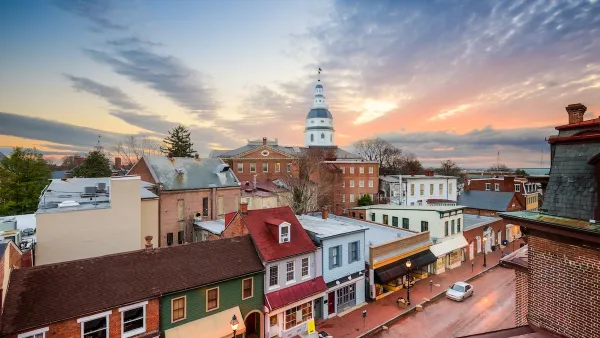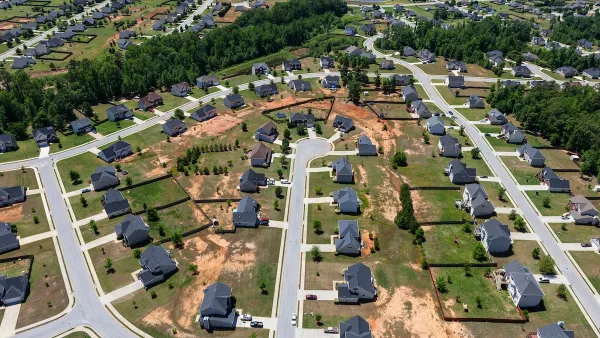Trying to thread the needle between those who celebrate the demise of the exurb and those who bemoan smart growth policies, Edward Glaeser argues that we can, and should, have it all when it comes to housing choice in America.
Rather than picking sides in the sprawl versus density debate, Glaeser argues for the importance of all of the above:
"Economic theory typically embraces choice, whether in supermarkets or in cities. It is a great thing that Americans can opt to live in dense cities or sprawling suburbs. As long as people pay the social costs of their actions, and are not subsidized by policies that artificially favor one living style over another, then it is splendid that we have plenty of options, some with sunshine and inexpensive mass-produced housing and others with high wages and costly apartments."
The crucial caveat in the above statement should not go unnoticed, as it serves as the front line in the debate between the supporters of sprawl and density. Rather than getting caught up in current skirmishes, however, Glaeser frames the debate in larger historical terms:
"The tides of history may occasionally make one form of living appear temporarily triumphant -- as suburbia did, thanks to cheap cars and abundant highways, in the 1960s and 1970s -- but soon enough other forces reassert themselves. After 1980, globalization and new technologies increased the value of ideas and innovation, which in turn led to a rebirth of those older, denser cities that were heavy with human capital."
In the end, Glaeser offers suggestions to ameliorate the worst side effects of each development type:
"Cities such as New York, Boston and San Francisco, where prices have stayed reasonably high, despite the crash, should do more to promote affordable housing, especially by eliminating the barriers to new construction."
"Cities such as Dallas and Houston are doing well with their low-cost pro-business model, but history has been less kind to less-educated places. They should be investing more in education and in urban amenities that will attract the more skilled."
"The biggest challenges are in the places like Merced and Detroit that have too much housing relative to the level of demand. These places have too little education, and lack the industrial strength that holds up Houston. These areas should at least focus on educating their children and creating a more business-friendly environment."
FULL STORY: You Hate Taxes, but You’re Not Moving to Nashville

Analysis: Cybertruck Fatality Rate Far Exceeds That of Ford Pinto
The Tesla Cybertruck was recalled seven times last year.

National Parks Layoffs Will Cause Communities to Lose Billions
Thousands of essential park workers were laid off this week, just before the busy spring break season.

Retro-silient?: America’s First “Eco-burb,” The Woodlands Turns 50
A master-planned community north of Houston offers lessons on green infrastructure and resilient design, but falls short of its founder’s lofty affordability and walkability goals.

Test News Post 1
This is a summary

Analysis: Cybertruck Fatality Rate Far Exceeds That of Ford Pinto
The Tesla Cybertruck was recalled seven times last year.

Test News Headline 46
Test for the image on the front page.
Urban Design for Planners 1: Software Tools
This six-course series explores essential urban design concepts using open source software and equips planners with the tools they need to participate fully in the urban design process.
Planning for Universal Design
Learn the tools for implementing Universal Design in planning regulations.
EMC Planning Group, Inc.
Planetizen
Planetizen
Mpact (formerly Rail~Volution)
Great Falls Development Authority, Inc.
HUDs Office of Policy Development and Research
NYU Wagner Graduate School of Public Service




























